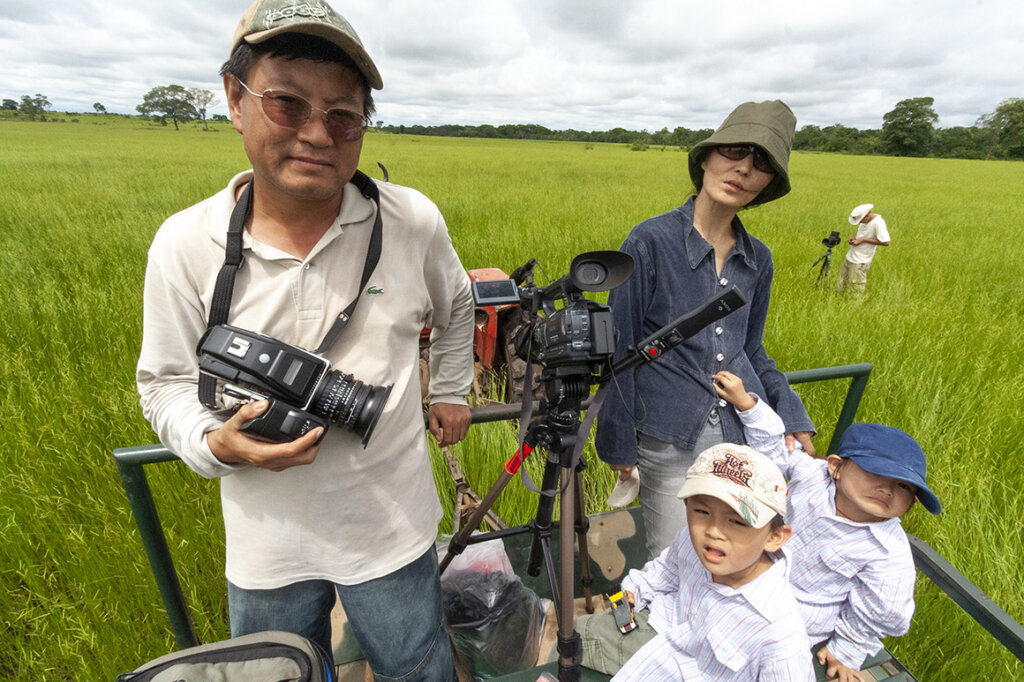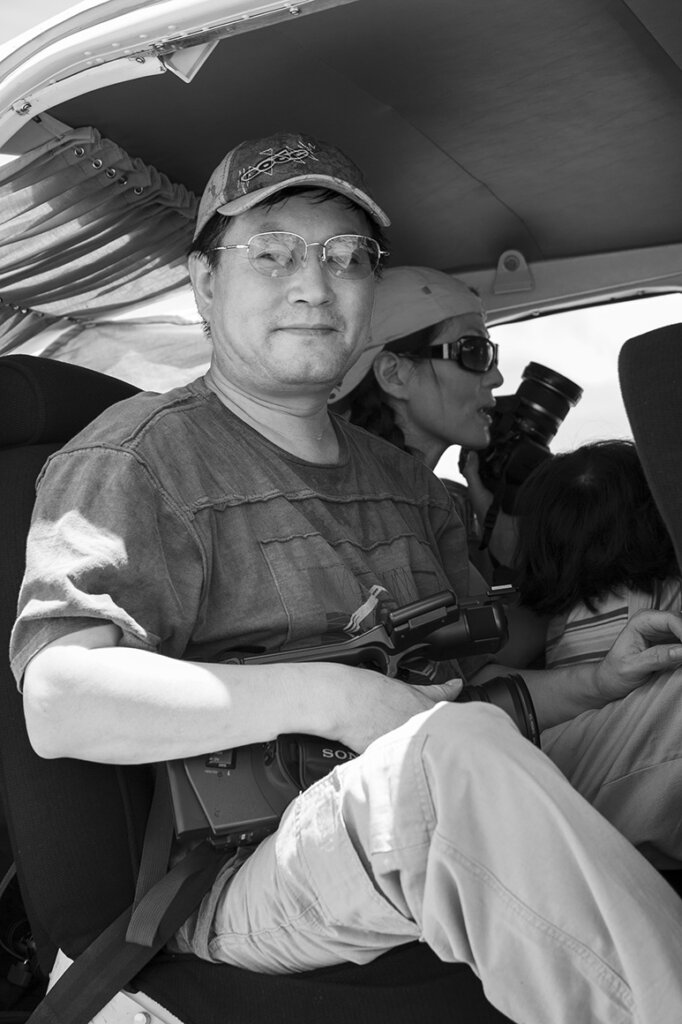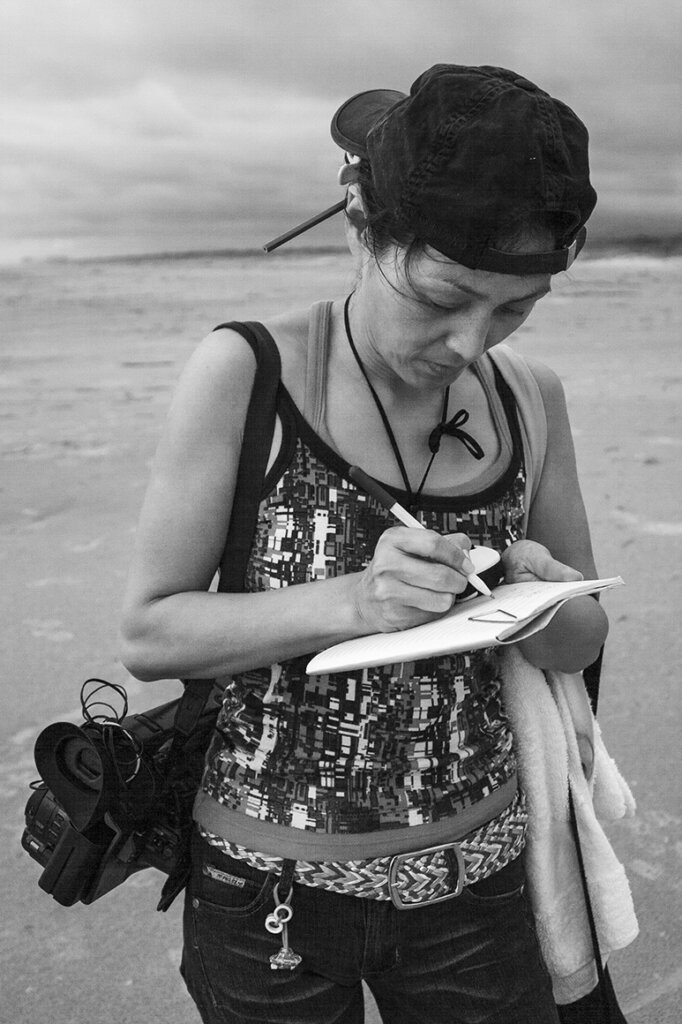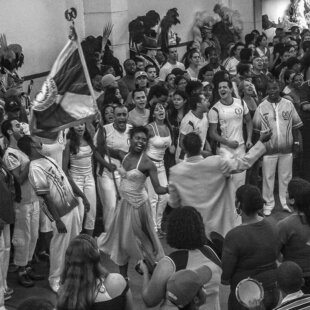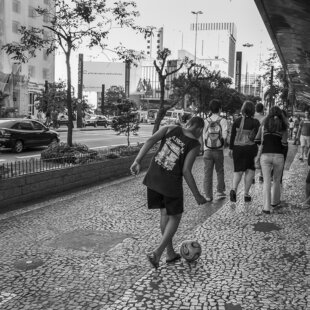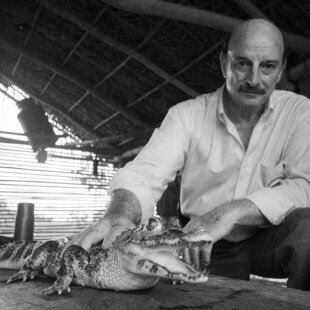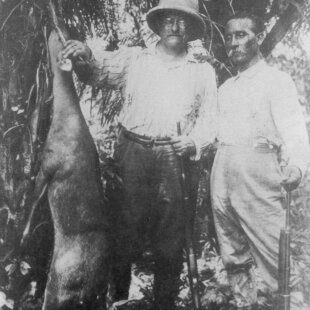In addition to Portuguese, the 658 tea farmers from Macao and Guangzhou of China to Rio De Janeiro in 1808 can been seen as the first batch of immigrants to Brazil. Then Brazil has been drawing people of different background ever since. There have been immigrants to Brazil from more than 70 countries including Italy, Spain, France, Holland, Turkey, Poland, Hungary, Czech, Russia, Syria, Lebanon, Saudi Arab, Japan, Korea, Argentina, Paraguay, Uruguay, Bolivia, Peru, Chile, East Africa, Africa continent, and Angola.
Coffee
Coffee economy has significant impact on society, economy and politics of Brazil and the impact has long duration, which any economic cycle can not be comparable with. In 1727, coffee cultivation was spread from Guiana, France to northern Brazil and to Rio de Janeiro in 1760 and replaced the local sugar cane cultivation. In 1831, coffee jumped to rank the first among Brazilian exports. Social wealth increased because of the development of the coffee industry, while needed by the development coffee industry, and thus breakthroughs were made in the development of municipal and railway infrastructure, national integration was strengthened, culminating in the national economic center shifted to the southeast area. Known as the “Coffee Baron”, the Sao Paulo coffee plantation owners and owners of Minas Gerais’s large farming gradually became the stage where they jointly ruled Brazil. After Brazil finally abolished slavery in 1888, the labor shortage became the outstanding problems in coffee industry, leading to the climax of foreign immigration. The main job of the foreign immigrants in Brazil was to work in coffee plantations, as wage laborers replacing the previous slaves. Immigrants not only had a profound impact in Brazil’s economic, political, ideological and cultural aspects, but also made Brazilian society more open, more extensive contact with the outside world, more frequent personnel communication and ideas exchange.
Celebration
“Festa” is kind of tuner, which is used to create ebullition, defuse conflicts, popularize the tradition, collect resources and establish ideals……numerous “Festa” activities such as Brasil Canaval, Oktoberfest, Festas Paulistas and Festa do Divino Espírito Santo, etc., show to the world a Brazil formed by diverse cultures. Exploration colonization, bear festival, phenomenology of religion, tales of legendia, natural wonders, historical events and city commemoration, etc. are regarded as the main origin of “Festa” and have not to be verified. In Brazil, “Festa” is viewed as the beginning of being qualified to distinguish people through ceremony. Through “Festa”, many groups have embodied the will, achievement and organization level, reflecting the polity and economy. “Festa” is still the primary meeting to nominate the candidates by official bodies. In fact, “Festa” is the basic factor indispensable to the life of Brazilian, who firmly believe that “Festa” can amend the society and help the country to realize the dream.
Football
The sport of football was not invented by Brazil. Yet it is Brazilian who has promoted the development of football sport into perfection. The Brazilian football match of uniqueness has gained its fame as well-known as the coffee and Carnival of Brazil all across the world.
The sport of football was introduced into Brazil by a British-Brazilian named Charles Miller not long before the ushering of the 20th century. Miller learnt to play football during his stay in Britain as an exchange student and brought with him the famous sport when he returned to St. Paul. Miller’s parents were among one of the earliest batch of British technicians who came to Brazil to assist the construction of railways, harbors and power plants in Brazil at the end of 19th century. Miller had h ad such a good command of the skills of the sport before he went back to Brazil in 1895 that he then taught his friend to play it in a sports club formed by British members in St. Paul after his return from Britain. By the year of 1901, when the football federation was established in St. Paul, the sports club presented the first ever football team in Brazil and won the championship consecutively in the first three football tournaments since 1902. The history of the British-Brazilians’ triumph in football match were finally ended in 1904 when the native Brazilian finally learnt the skills of the sport and made better performance in the match. Football has been overwhelming the whole country like the flame setting the prairie ablaze. No one, even the British who is the inventor of sport, can well compete with the native Brazilians in the football match.
80 years later, football is not merely a national sport for leisure in the eyes of Brazilian but a crazy and cheerful game for millions of fans in Brazil. When the football game is held every four years, the craze of the Brazilian fans for football reaches its peak in every field, small or large, whether of the town, school, or community, regardless of being just at some vacant land or in such stadiums capable of accommodating hundreds of audiences. Even in the far Indian villages of Amazon Basin, there stretch proudly the football fields. What makes them so unique is the football of coconut, the special material of which was made out of the local produce for the natives’ convenience and totally based on the originality of the natives.
Whenever the national football team is to attend the World Cup representing Brazil, all industries are suspended in the country, the scale of which will exceed that of a general stike. As a result, a lot of TV sets were equipped beside the factory plants in order to provide convenience for the fans to watch the game and in turn reduce the leave rate to the minimum. However, after several rounds of efforts which normally ended in vain, most of the enterprises, whether manufacturing or marketing, adopt the temporary close for the football match during period of the World Cup time and the follow-up celebrations for Brazil’s championship.
The reason why football has gained its popularity across the whole country perhaps lies in the fact that all the youth from all walks of life can well devote themselves to the sports. The sport in vogue has created a large amount of top players from the slums in Brazil, who strongly believe that it is the sport that eradicates the poverty plaguing their life. This is also the passport to the road of prosperity. The stories which revealed those guys who vault to fame and gain a great deal of fortune just by the skills of their feet on the football have inspired millions of juveniles in the slums to aim high and ambitiously become somebody.
In fact, the whole nation of Brazil will be great affected emotionally by the result of such important football matches in which Brazilian football team is in. For instance, the fame of the government under the leadership of President Emilio Garrastazu Medici had been raised dramatically just due to the fact that the Brazilian Team won another championship after twice of triumph in the World Cups. The government of Emilio Garrastazu Medici was once trapped for its insufficiency in the appeasing the civil strife stirred by the urban guerillas. To date, what earns a page for General Emilio Garrastazu Medici in history books is not his political achievements but the victory of Brazilian football team in the World Cups.
Pantaleiro
Pantanal is located in the wide plateau in the western Brazilian, covering an area of 40,000 square miles. As the origin of many rivers in Brazil, the plateau is linked with the branch of Amazon River to its north and with Prana River and Paraguay River to its south. The circulation of the rain season dominates the wetlands. The seasonal flooding has attracted innumerable wild animals and rare beasts of various types, also forming the largest camp for the large and rare birds of various categories in the world.
Despite the complexity and wideness of the wetlands, the desire of the human being to conquer it has never been changed in its long history. At the vast virgin land, there are treasures all around that can furnish people with great fortune, which were instantly left for the obtainance by the strong and brave. Streams of people had been to the land of paradise one after another to achieve their dream even under the threat of Pistoleiros’ guns. What the adventurer cannot deal with is their own desire and the determination of conquering the land. The busy and nosy towns, fresh from its founders’ bluntness and curtness, were established in the front of the far and wild west of the country. The stumbling soil roads with the dust hovering were impatient to be landscaped. There were losers who might even have lost their lives. Some frontiers suffering a lot from the malaria and pyrexia and incapable of bearing the pains of path breaking were moved back to the slums of St. Paul. The farmers and gold miners with dust and sand covered had broadened the land of legendary to the farther inch by inch, leaving smoke of cooking and light of hope on the verge of the jungles.
The first batch of frontiers ever into Patanal was the bandeirantes for the gold mining in 1720, which had left far-reaching and profound influence in the history of Brazil. Bearing the half blood of Indian and Portuguese, together with the maternally-inheritated spirits of frontiering and exploration, skills of survival from their Indian mothers and the paternally-inheritated desire for fortune and interests, they recklessly travel around the world instinctively out of the nature of nomadic tribes.
At the beginning of the 20th century, the central government was concerned about the expansion forces in the western region, appointing Rondon to involve in a breakthrough military task to blaze trails and lay telecommunication networks in the largest wetlands and primitive forests in the world. A lot of tribes lost the lives of their people to the malaria. But Rondon’s ideal and faith won him the trust and admiration of the hostile Indian tribes and the forest white of cruelty, the former of which were even engaged in the telegraphic operation afterwards. Hardly had the construction been achieved when the telegraphs were abandoned on the shelf. However, Rondon gained his fame in the history by his eloquent speech of heartquake on the theme of forest and his escort of the former president Roosevelt in the expedition of the Amazon River, resulting in the establishment of the first Indian Shelter in 1910. The tough construction made the the forest and its Indian tribes more understandable to the world and Rondon also got the Nobel Peace Prize for the effective implementation of his ambitions. Rondonia state was named after Rondon. In 1935, the French anthropologist Claude Lévi-Strauss followed Rondon’s steps and set his camps in the residences of such small tribes as Bamenda, Buenuo and Vienna, etc. It had been 8 years since the abandoned telegraphers got their provision from the outside the last time. To date, the habitats have been developed into a prosperous city across the 364 State Highway.
The struggles between the human being and the nature, the animals and those among human beings are mainly for the purpose of survival. They have been guarding the territory at the price of their lives and blood, constructing and maintaining it with their shoulder to collar day by day. After all there is too much unseen in the vast land and the innumerable fortune and treasure on it always calls up their tough patience and unshakeable faith. Singing the nostalgic ballads as they might be, their determination of safeguarding and obtaining the existing fortune at present and those coming in the future will never be influenced. These are the pantaleroes, who have been writing their own chapter of glory and dream on the land disagreeing with the survival of human beings.
Dreams of Amazon
Since the discovery of Amazon River for the first time, human beings have been tried to recognize and conquer it while taking over its treasures. Beckoned by the so called gold dream of “Kingdom of Manoah”, Goncalo Pizarro, the Spanish adventurer who had ever conquered Andes, led an armed force of 20 soldiers, dozens of Indian guides, 2000 coursers and 5000 pigs to the legendary “Kingdom of Manoah” from Ecuador. Armed with the armors and noises of coursers and wolfs, the peculiar expedition team moved along the slope of the eastern Andes and tried to deepen into the jungles. When they descended from the mount, troubles offered themselves with the unexpected attacks from the Indian, which killed the slow-to-fight-back soldiers, scared away the guides and put the Spain into hunger and desperation. The expedition team was forced to move back with only 80 scarecrow soldiers left.
The famous American enterprises Henry Ford, who once tried to monopoly the automobile industry, bought the rubber plantations in Amazon in 1927, trying to compete with the British. However his plan suffered a miscarriage when his rubber gardens were plagued with the pests and achieved poor harvest. During the period of the 19 years, Ford lost 80 million dollars in the rubber plantations. Until now the two rubber plantations of Ford, namely Fordlandia and Belterra are still there. The trucks and generators were deserted behind the rows of white houses decorated with the curtains, decayed under the erosion of the moisture. Another dream of Amazon had turned into bubbles.
20 years later, another American billionaire Daniel Ludwig launched his plan of development in Amazon by buying large forests and farms. The super designer of oil tankers and the owner of the Universal Oil Tanker Corporation was once ambitious on the road to achieve his Amazon dreams. Unfortunately, he had no more luck than Ford.
During the 1760s, the engineers from Britain and America were engaged in the construction of the railways in Amazon, by which they hoped to transport large amounts of rubbers along the River to the outside. But each section of rails was built at the price of a life due to the diseases of malaria or pyrexia. Among those American workers who were sent to the Amazon River, 80 were drowned to death and 141 died of malaria. In addition, another 400 Brazilians and 200 Bolivians were killed. All the high price was paid for a mere section of railways of 6 kilometers in length. As a result, the railway was always being shadowed by bankruptcy, riots, and death. In 1903, the Brazilian government made an offer of the rubber plantations on the preconditions of the completion of the railway construction. After ten years of efforts and at the prices of 30,000 workers’ lives, the railway of 370 kilometers in length was finally completed when the stock market of Amazon rubbers was just trapped in the disadvantages of collapse. Except the section of 13 kilometers, all the rest of the railway was discarded uselessly.
In 1967,Ludwig paid 3 million dollars for the large area of jungles as wide as that of the whole Connecticut State. He was planning to set up a paper corporation featuring the manufacturing of wooden materials, paper pulp and the finished products of paper. The reason of his selection of the place is that it is suitable for the plantation of trees all year long. He bought the vast land, which seemed to be a wise choice. Yet he ignored the truth that the soil of the Amazon River bank is insufficient for the plantation of trees at a large amount. And this brought him a lot of problems that severely influenced the productivity including the multiplication of weeds and bacteria, and the infesting of the ants and other pests. He couldn’t help but transfer his focus onto the pavement of the roads, the establishment of schools and the build-up of power plants without the support of the government. In 1982, he had to sell the jungles at a price of 440 million dollars to the local company of Brazil, suffering a great loss compared to his total amount of investment of 900 million dollars.
The efforts of the developers have been gone with the wind, with the mere rows of tombstones in Kanterary Cemetery indicating so many plans of Amazon’s developers.
The most remarkable land expedition along the Amazon River was made by the team under the co-leadership of the former US president Roosevelt, famous Brazilian adventurer and the senior Indian agency Candido-Rondon. Setting off from the north of Mato Grosso, they travelled all the way for 59 days, covering a distance of 1451 kilometers. According to the records made by the former president Roosevelt, “we are entering into a place that no one else has ever set foot on. Nobody knows what is inside. It is a world of no civilization, without a white man ever to trace the origin of the river in its or lower upper section. The rain forest we are through has been unseen and anything might happen to us.” Several days later, Roosevelt continued this kind of recording in his journal, “mosquitoes are humming around us; the poisonous fire ants are biting us without mercy; the thorns of little palm trees left their traces on our hand with the cut festering…” what is the most horrified is Amazon River itself. “ the torrential water suspended our boats, which had been tried to be carried down and failed because of the steepness of the mountain… despite the fact that we may all lose our lives in the torrents, we have to take a risk. ” and even president Roosevelt himself might have once been deprived of his life by a severe fever in the adventure but for his good luck. When the expedition team held their celebration at the intersection of Madeira River with an unknown river, Rondon presented a metal plate with the inscriptions of “River Roosevelt”, since when the unknown river was named after Roosevelt as River Roosevelt. Brave and courageous as the president and his expedition team with their remarkable achievements, the impossibility of the thorough exploration of Amazon River was also proved by the tough journey.
Actually, the whole geographical situation changes frequently in the area. In 1836, there were five anchoring Portuguese merchant vessels pushed away crudely by a “grass islet”. The grass of the islet was pulled up by the roots with the strong torrents of Amazon River. To date, the islets of ghost will alternate the geographical fact of Amazon River so much at any time that the navigation map of the region has to be amended every two decades.


